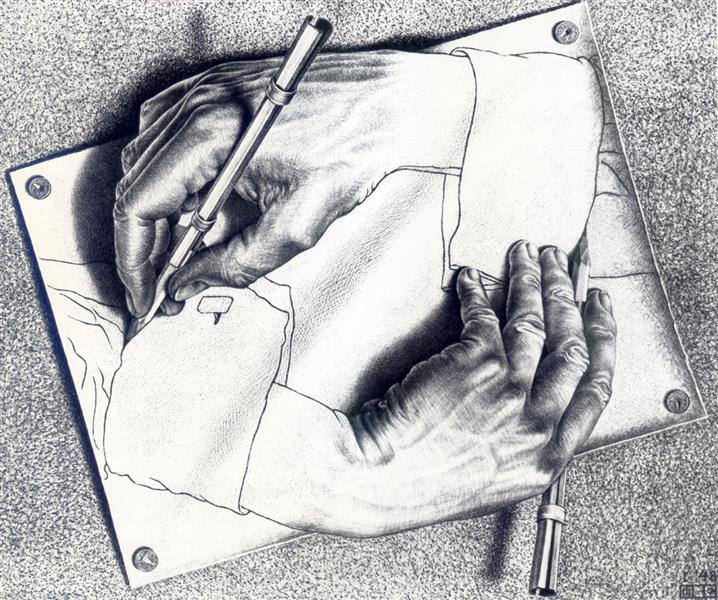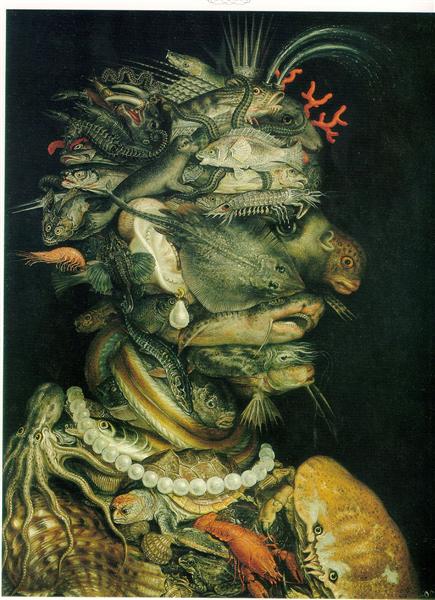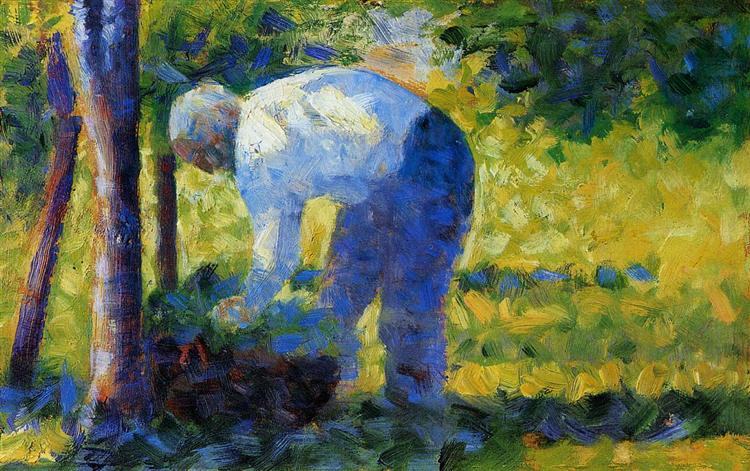The way our consciousness works is to hold some object in its spotlight but with tendrils that extend to make the next conscious thought come more readily to mind. This is how we sense our environments so quickly; we notice the perceptual pattern of one part of the world and helps in predicting the next thing we might perceive. It is a false assumption that we can have multiple things in attention, but our thoughts can move more and more readily between two things when we have associated them.
This is why we associate things and is the main element of basic learning. There is an element within association that is like a rule for how our brain associates two or more ideas. The element or quality of perception is called contiguity, and it allows us to see the world as objects but with unconscious (or rather preconscious) webs of criteria and rules for identifying things. When consciously defining a thing or concept, our thoughts travel down these routes.
Here I will discuss the consequences of association by contiguity. Inside every idea, there are associative elements which define it, and help us fit it logically into our worlds. The associative criteria for an idea can be a simple concept like “circle” or complex like love.” But the concept is not the same as its parts. In reality and in our minds, a whole idea takes on a brand-new function, a gestalt of its elements. We think of love, and its elements come readily to mind, but thinking of love or experiencing it as a whole is different than experiencing any isolated rule which defines it for us. Here we will find that what level of conception we focus on (specific to general) serves new purposes and does, in fact, matter in how we live our lives.
The Basics of Contiguity in Perception

Contiguity is one of the three qualities of perception that the philosopher David Hume gives us to describe the elements which aid in the associations between sensations that give rise to the perception of an object. Hume had a talent for describing the very basic pieces of our experience, and he is right that association via contiguity of sensations and perceptions is an essential piece to our basic experience.

Contiguity means generally that when some sensory impression is paired in time and place with another, we will perceive them as being part of the same object. We learn, mostly through our primary and associative perceptual organs, how to place rules around the raw sensory data to form meaningful objects. Rules of contiguity are embedded into our perception and we cannot help to see a whole even if we know it is made up of small parts. Association of contiguity also explains the nonconscious way we predict how things continue even if something blocks our view of them, or seeing the line in a broken series of dashes. The learned patterns of perception then give us the rules for what constitutes the perception of a whole object.
These perceptual rules are put to the test—and often pass—when a simple cartoon drawing of a car will suffice for the recognition of it as a car. We are so perceptually accustomed to recognize the basic contours and shapes of a car that even a basic icon provokes the idea of a car. Each time an implicit memory of a whole object is formed which allows us to quickly recognize cars, it leaves a conceptual trace that Hume called an “idea.”

Contiguity of Ideas to Create Concepts
Every pattern that we recognize that organizes the world according to some rule or prediction to get a better understanding of our space, everything in the realm of memory, is called an idea. When an object is perceived as contiguous in space and time, the elements of its perception create an idea of that object.
In memory we have the elements of perception that are used to properly define an object. Hume tells us that from our perceptions we create ideas, which are vague/less-vivid than the impressions or perceptions.
“Under [impressions] I comprehend all our sensations, passions and emotions, as they make their first appearance in the soul. By ideas I mean the faint images of these in thinking and reasoning”
David Hume
Ideas, at their most basic, is a rewiring of the brain to more easily recognize a complex group of sensations or perceptions. An idea is stored in the memory after perception that can be awoken with or without the perception or object itself.
An idea can anchored to a word, but many ideas may be no more than the imprint on the brain that signals that have once seen this thing before, and should react similarly. Even the most basic creatures can do this. William James defines for us the simplest form of idea here: “All that is required is that they should recognize the same experience again. A polyp would be a conceptual thinker if a feeling of ‘Hollo! Thingumabob again!’ ever flitted through its mind.” The polyp must have basic organized rules for defining the Thingumabob which lead to its reaction. The rules of contiguous perceptions and sensation define the object-action in response. Somewhere, whether word, feeling, or action, the important pattern—or idea—is recorded.

While an object gets its shape from rules of contiguity of perception, things will still appear ambiguous to us. A table that is perceived directly from the side can look only like two vertical bars with a horizontal one across the top. Rules of perception may not get us all the way to identify many things. That is why contiguity between ideas will too become important: the idea of table will come to mind more easily if other ideas come to mind that relate to the table. For instance, if bowls and plates were sitting on top of the ambiguous table-shape, there would be little ambiguity that it was a table. Ideas of bowls and plates provoked more readily the idea of a table. The perceptions and their ideas work together to help us quickly recognize our world.
The Fringe and Association
To understand how contiguity can exist between ideas requires understanding of how we associate ideas. When we perceive and recognize something, igniting the feeling of that object, we are both thinking of that perceived object and on the verge of thinking about another idea. This, in the context of contiguity in space and time, allows us to travel on trains of thought.
“When you’re reminded of something that happened in the 1960s—miniskirts, for example—you may think of the Vietnam War, because they are temporally contiguous. Thinking of Sausalito may lead you to think of the Golden Gate Bridge, which may also lead you to think of San Francisco, since they are spatially contiguous.”
William Edward Morris on Hume’s philosophy
William James coined the term “fringe” to define the apparent verge of thought that exists around the object of present consciousness. What is in the fringe is the ideas which momentarily have a heightened potential of being ignited as we think of another related thing. To James, this is the “penumbra” of the perception or idea of something. It helps us see the concept of the object and it also guides our thought to other contiguous things.
The fringe is what makes the thought of a baseball remind us more readily of the diamond. The reading the word “bat” following the previous sentence probably was read as a baseball bat rather than the animal, because “baseball” hung in the fringe to help interpret the next idea. All associations of things which arrive together hang on the outside of the directly perceived, contiguous item. It increases our expectations of perceptibility of things. Our associations help us interpret ambiguous information by using context to predict and interpret upcoming perceptions.
Fringe in Contiguity and the Essence of an Object
Contiguity of association comes in when we consider the contents of objects and ideas. William James uses the example of a deck of cards. When we see a deck, we think of it and interact with it as a whole. We do not think of it as 52 individual cards in the deck. We simply pack the single deck in our bag on our camping trip.
But if we were to define a deck of cards, it would have the 52 cards, 13 of each of the four suits. These parts are only in the fringe when we perceive the deck, and they wait to come into use when the right motivation or stimulus reminds us of the exact definition of a deck of cards, for instance if we want to play a card game.
We find that the object is the functional node which supplies the function. The essence of the object is determined by its parts and situation to create a feeling of action organized in the mind as something with greater meaning, i.e., an idea or concept. Without one essential elements of the “thingamabob,” the polyp might not recognize it as such—meaning that it will not react how it would before. This is where is highest meaning lives, in the whole that we perceive. The thingamabob to the barnacle has this essence but it only lives in a simple, stereotyped action. If one element is missing from that stimulus, it might not function to produce the same reaction.
The fringe helps us associate between ideas more readily. And contingency helps define the things in our world with layers and complexity. Together, they give perceptions and ideas a penumbra of other ideas which define the essence of what that thing is. It is the context that makes some advice angering, or when the same advice is given by a friend, it is useful. What gives us the essence of the advice is all the ideas that have been defining the situation to interpret new information.
Life and Its Elements
We can use this understanding to look at life itself, or other important large concepts in it. Thinks like work, love, freedom, virtue, and truth are all large ideas which are defined by smaller elements, in the same contiguous way as the previous examples. And for these ideas to have their functional wholesomeness in our lives, the parts must all be present.

When we ask, “what is the meaning of my life?” or “how do I act freely?” we are tempted to define those words neatly in a couple sentences or lists of the important elements of life and freedom. But because the concepts are so complex and broad, and the function of those concepts in our life exists somewhere, perhaps hidden, in our minds, we must not reduce them to any singular parts. The total meaning is larger than its individual parts. The whole idea has its unique value, but yet we must make those parts contribute to the whole.
For a concept like “love” we must not forget the importance of the everyday interactions which define only a small part of it. Love does not exist in an abstract definition, it requires all its parts to be real, to have its essence. Love, if it is missing one essential element, like a deck of cards missing the ace of spades, ceases to be love in its essential form.
Demonstrating my point, the writer Annie Dillard recognizes the importance of each smaller element as life as an essential piece.
“How we spend our days is, of course, how we spend our lives. What we do with this hour, and that one, is what we are doing.”
Annie Dillard
We also have the opposite problem. In our everyday life, we analyze the minutia; the grand concept of life is almost never recalled. The large concepts which if aimed at, could improve life, are often lost in the pieces. Every time we pick up the deck of cards, we count them and make sure they are all there, but we never used them to play any games.
To demonstrate how well Annie Dillard understands this dynamic, she writes again: “Aim for the chopping block. If you aim for the wood, you will have nothing.” This time she emphasizes what is beyond the concrete minutia.
It is important to be conscious of all the ingredients that make up the ideas we have, but we also need to accept the whole as another level to the recipe with a greater function. Changing the components can change the whole completely, but often it is the little, everyday changes that sway life in a better direction.
